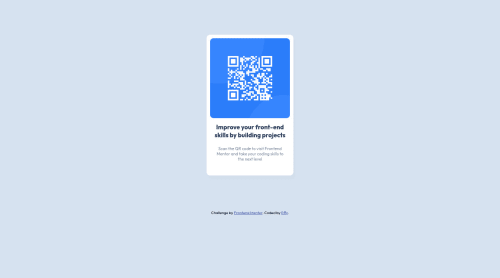Modified 1st challenge

Solution retrospective
Based on the feedback I got from my first submission. I fixed some problems. Now I want to see the new result.
Please log in to post a comment
Log in with GitHubCommunity feedback
- Account deleted
Hey there! 👋 Here are some suggestions to help improve your code:
- To properly center your content to your page, you will want to add the following to your
bodyelement (this method uses CSSGrid):
body { min-height: 100vh; display: grid; place-content: center; }More Info:📚
[Centering in CSS][https://moderncss.dev/complete-guide-to-centering-in-css/]
- Increase 📈 the
widthof you component to better match the FEM design.
- The
alt tagdescription for the QR image needs to be improved upon. Its needs to tell screen reader users what it is and where it will take them to when they scan it.
- A
media queryis not needed for this challenge. Using responsive properties will do in making your content responsive.
If you have any questions or need further clarification, feel free to reach out to me.
Happy Coding! 🍂🦃
Marked as helpful - To properly center your content to your page, you will want to add the following to your
- @AdrianoEscarabote
Hi Effy Zhang, how are you? I really liked the result of your project, but I have some tips that I think you will enjoy:
To align some content in the center of the screen, always prefer to use
display: flex;it will make the layout more responsive!body { margin: 0; padding: 0; display: flex; align-items: center; flex-direction: column; justify-content: center; min-height: 100vh; }This part of the media query is not needed as the project is responsive without it!
.card { /* max-width: 325px; */ /* border-radius: 15px; */ /* padding: 15px; */ }The rest is great!
I hope it helps... 👍
Marked as helpful
Join our Discord community
Join thousands of Frontend Mentor community members taking the challenges, sharing resources, helping each other, and chatting about all things front-end!
Join our Discord